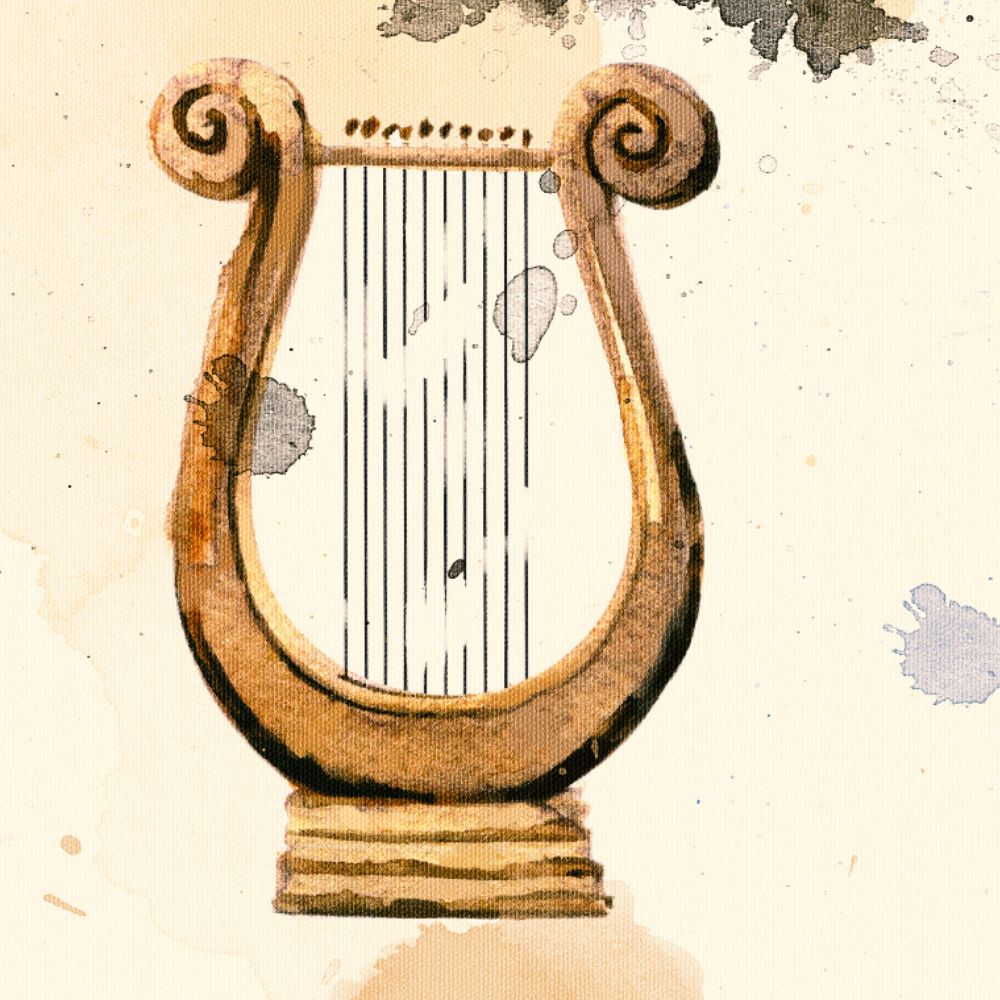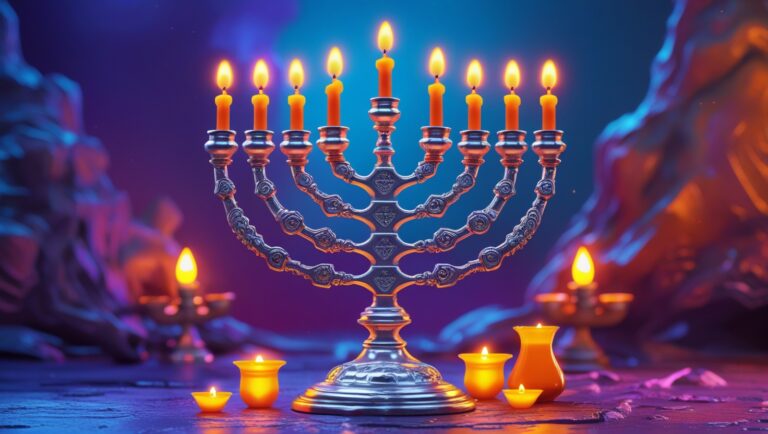Many people are curious to know how life after death looks like. Yet, life after death is a very complex process.
The soul, the highest creation of Hashem, is a very sophisticated and intricate entity. It comprises many levels as we saw in a previous article. The 5 main levels are Nefesh (the lowest), Ruach, Neshama, Chaya and Yechida. But even within each of those levels there are other 5 levels, and so on without end. The Nefesh is the only one that needs to be rectified and is the one that we are most in contact with.
At this point it should be reiterated that “soul is consciousness”. Most of us experience only the Nefesh in our lifetimes, but with due work, it’s possible to perceive the Ruach and Neshama at certain moments or even receive it permanently.
To assert that the soul stands as one of Hashem’s most extraordinary creations is no exaggeration.
Our journey in this earthly realm carries a dual purpose: the refinement of our own essence and the rectification of spiritual worlds. Each individual, Jews and non-Jews, is entrusted with a unique life mission but unfortunately, the distractions of material existence often entangle our minds.
Imperfections are inherent in human experience, as evidenced by the wisdom of Ecclesiastes: “There is no righteous man in the land who will do good and will not sin.” Consequently, every deviation from Hashem’s laws, no matter how small, carries with it the need for a Tikkun (‘rectification’). This Tikkun can be accomplished in this world or the next.
When people die, they undergo a very complex process in the spiritual worlds. They don’t just “wake up and see Hashem”. Some go to Kaf HaKelah (pouch of the slingshot, a punishment), some go to Gehinom (often translated as “hell”), some have to wait for judgment or reincarnation and some will go straight (after judgment) to either the upper or lower Gan Eden.
For those souls that go to Kaf HaKelah or Gehinom, they can greatly benefit from help from the living because the suffering of either of them is horrible beyond our imagination or comprehension. Life after death can be very tough, but Hashem in His great wisdom and compassion devised many ways for us to prepare for it. One of these ways is the Tikkun HaNiftarim which we will see very soon.
While the soul is alive, it can do Teshuva and get rid of a lot of the punishment. Even if a person fulfills the entire Torah until leaving this world, that in itself does not guarantee he won’t suffer because he still may need to do special Tikkun for the rectification of the spiritual worlds. In a sense, the difference between Teshuva and Tikkun is the difference between one who breaks the King’s ceramic vase worth a billion dollars and says “I’m sorry”, and the one who breaks it, apologizes and buys a new one for the King.
In this poignant scenario, a pressing question emerges:
How can we contribute to the redemption of departed souls?

The Tikkun HaNiftarim, a true blessing for the deceased
As we previously discussed, the post-mortem journey can be tough. However, Baruch Hashem, the genuine Mekubalim have taught us specific prayers and rituals that each of us can undertake to aid our departed loved ones. This, by the way, is a huge matter which should be publicized because very few people know about it.
Through these practices, we offer them relief and an end to their torment, whatever that may be in life after death. This is known as Tikkun HaNiftarim, or the Rectification of the Deceased. Such a correction ensures that the soul is free from suffering and is brought to its rightful place, resting in a more elevated state.
For those eager to support their loved ones who have already transitioned, you can order a Tikkun HaNiftarim here.
Kindly share this link with your family and friends, enlightening them on the significance of Tikkun HaNiftarim and encouraging them to participate in aiding their departed loved ones. This is probably the most effective and powerful way of helping them.
Now, let’s delve into an explanation of how the Rectification of the Deceased operates below.
The formula for rectifying the deceased
One of the eminent Kabbalists who established the Tikkun HaNiftarim in recent times is Rabbi Yehuda Fetaya. In his sacred work, “Minchat Yehuda,” he teaches us many invaluable insights, stating, “If the heirs aspire to bring solace and rescue their departed loved ones from the trials and tribulations, the only path is through earnest prayer to the king of the world on behalf of the departed soul. This, however, should be undertaken by individuals well-versed in Torah and who can meticulously perform the necessary reparations.”
Many Kabbalistic sources emphasize the urgency of of conducting such Tikkunim for the departed, a practice advised even for those who led observant lives in accordance with the Torah and Mitzvot.
During the Tikkun process, specific prayers are said for the departed soul. This involves ten men who are knowledgeable, with Yir’at Shamayim, and reciting the book of Tehilim together while fasting in the synagogue while in a state of Taharah (purity) after immersion in the Mikvah.
Studying the Zohar to repair the soul of the deceased
However, in the event that assembling ten individuals with the requisite knowledge proves challenging, insights from the book Shivkhei HaAri (“Praises of the Arizal,”) chronicled by his students, shed light on an alternative approach. The Arizal emphasized the profound impact of studying the Zohar, as this sacred text in Aramaic carries incredible transformative power for the human soul.
Furthermore, the Chida (Rav Chaim Yosef David Azulai), in his work “Avodat HaKodesh” echoes the significance of Zohar study as the preeminent means for correcting the soul of the departed.

Engaging in this type of study serves as a genuine source of comfort for the departed so he can actually experience proper life after death. Such a gesture is bound to elicit eternal gratitude from the soul, and even get them to want to retribute the kindness as they lack the power to improve their own condition in the spiritual worlds.
It’s noteworthy that the practice of repairing the soul of the departed traces its roots back to ancient times, embedded in the teachings of the Torah as we will soon see. However, in this case, only the relatives and friends remaining in this world retain the capacity to rescue the departed soul from its punishments.
The right candidates for rectifying the souls
Considering the Torah’s stance that “there is no righteous man in the land who will do good and will not sin,” it becomes evident that almost everyone necessitates a rectification process to steer clear of the purification period—one that, regrettably, unfolds in the realm of Hell for a duration of 12 months. Following this purgation, the soul finds its place in heaven.
It’s crucial to note that this particular process applies exclusively to individuals who adhered to Torah and Mitzvot. Those who neglected the commandments or, God forbid, engaged in serious transgressions—such as desecrating the Sabbath or disregarding the laws of family purity, offenses that incur severe divine repercussions—endure a more protracted cleansing period exceeding the standard 12 months.
Given the gravity of these sins, a single reparative effort is insufficient; multiple repairs are requisite.
Rabbi Fetaya underscores the importance of persisting in this rectification process until the departed soul, in a dream, appears to one of their loved ones adorned in happiness and resplendent attire. This manifestation serves as an unmistakable sign that the cleansing process has reached its culmination.

Life after death – When is the right time to do a rectification for the deceased?
The efficacy of the rectification process significantly amplifies the closer it occurs to the time of passing, rendering it more beneficial for the departed soul. Remarkably, this undertaking is not bound by rigid time constraints; it can be initiated within the seven days of mourning, during the month of the individual’s passing, or, at the very least, within the span of a year.
This flexibility in timing underscores the ongoing opportunity to engage in the essential work of rectification for the benefit and elevation of the departed soul.
Is it helpful to make a rectification even for those who died many years ago?
Following the initial 12 months, there’s generally no need to rectify the soul of an individual who diligently observed the commandments, as it’s highly likely that they have already ascended to heaven, free from the designation of a transgressor.
Nevertheless, the tradition of elevating the soul through the recitation of psalms persists, observed annually during the memorial for the departed. This practice aligns with the belief that, even after two decades, souls and spirits undergo renewed scrutiny for lighter offenses, as indicated in sacred texts.
In essence, the ideal timeframe for rectification is as close to the time of passing as feasible, with the latest cut-off being the 12th month from the date of death. It’s important to note that this guidance pertains specifically to Torah observant Jews.
For those who lived a notably unvirtuous life, the imperative extends beyond the initial 12 months. Their journey involves navigating the realms of the slingshot (Kaf HaKelah), Gehinom, and purgatory, only then becoming suitably purified to enter heaven.
The severity of transgressions, particularly those deserving divine retribution, may preclude direct entry into Gehinom. Instead, the soul traverses various realms of punishment, encapsulated in the term “slingshot.”
For such individuals, extensive reparations, prayers, and soul-lifting efforts are requisite until they manifest in a dream, signaling their worthiness.
Can one rectification be done for several deceased at the same time?
In straightforward terms, yes, it’s entirely possible.
The wisdom of Rabbi Yehuda Fetayah, as documented in the book “Minchat Yehuda,” affirms that a single rectification can encompass even four or more departed individuals, extending to include a father and son within the same reparative process. The complete details from Rabbi Fetayah’s original text are available in his work, “Menacha Yehuda Hanakar.
In essence, the proper Tikkun should unfold over ten days, done by heaven-fearing, observant, and preferably wise disciples. These individuals, characterized by their holiness and purity, advocate on behalf of the departed during the rectification.
The reparative process entails the recitation of all the Psalms, circumambulation around the Torah seven times, the sounding of the Shofar, and the dedication of a Torah scroll.
It’s vital to grasp that this undertaking is a dedicated effort to uplift the souls of our departed loved ones. The complexity lies in the endeavor to repair and expunge sins spanning current and past incarnations.
Consider the poignant scenario of someone who has departed, leaving grieving relatives who yearn for one more moment with them. The desire to send something uplifting to bring joy to the departed soul is palpable.
Dreams often become a medium through which departed relatives make requests. In these dreams, the departed may seem to require necessities for living, clothes, or shelter. Though their requests may not always be articulated in words, the heartfelt sense of being able to do something for them remains.

The source for the rectification of the dead in the Tanach and Talmud
The rectification of Avshalom, the first Tikkun HaNiftarim in History
The Book of Shmuel II, in its 19th chapter, recounts the tragic demise of Avshalom. In his rebellion against his father’s kingdom, Avshalom’s actions escalated into a civil war, resulting in the death of 20,000 men of Israel. His demise at the hands of Yoav and his soldiers prompted profound grief in King David, who, upon hearing the news, ascended to the city gates, crying out the poignant verse, “Oh My Son Avshalom.
From the formulation of these heartfelt words, David initiated the first recorded correction for the deceased in the entire Torah.
The Gemara, found in Sotah page 10b, imparts a remarkable insight into the power of King David’s prayer. It reveals that David, uttering the phrase “My Son” eight times, lifted Absalom successively from each section of Gehinom (“hell”), ultimately ushering him into heaven. This narrative serves as a testament to the potency of prayer for the souls of the departed.
Additionally, the Gemara, in an account on page 2b, features the story of Elisha Ben-Abuyah, once the esteemed rabbi of Rabbi Meir Baal Haness. Despite straying from the righteous path and committing severe transgressions, Elisha’s previous Torah learning shielded him from punishment in Gehinom.
Nevertheless, his deviation prevented him from entering heaven. It was the concerted effort of Rabbi Meir and Rabbi Yohanan in performing a “correction for the deceased” that facilitated Elisha ben Abuya’s admission into heaven, highlighting the transformative impact of such corrections on the departed.

Life after death – How prayer can save a soul from Gehinom
The power of prayer stands as an unparalleled force capable of rescuing the soul of the departed from the torment of Gehinom and elevating it to the sublime realms of heaven. This privilege and power are truly exceptional.
It’s crucial to recognize the profound blessing bestowed upon the living who, in this world, can intercede on behalf of the departed, potentially circumventing the sentencing handed down by the higher courts overseeing the soul. This holds particularly true for those who may have faced the prospect of descending into the deepest recesses of Gehinom.
To all our valued students and supporters, we extend heartfelt wishes for abundant blessings. Feel free to share your thoughts on this article in the comments below and spread the wisdom across social media platforms!







